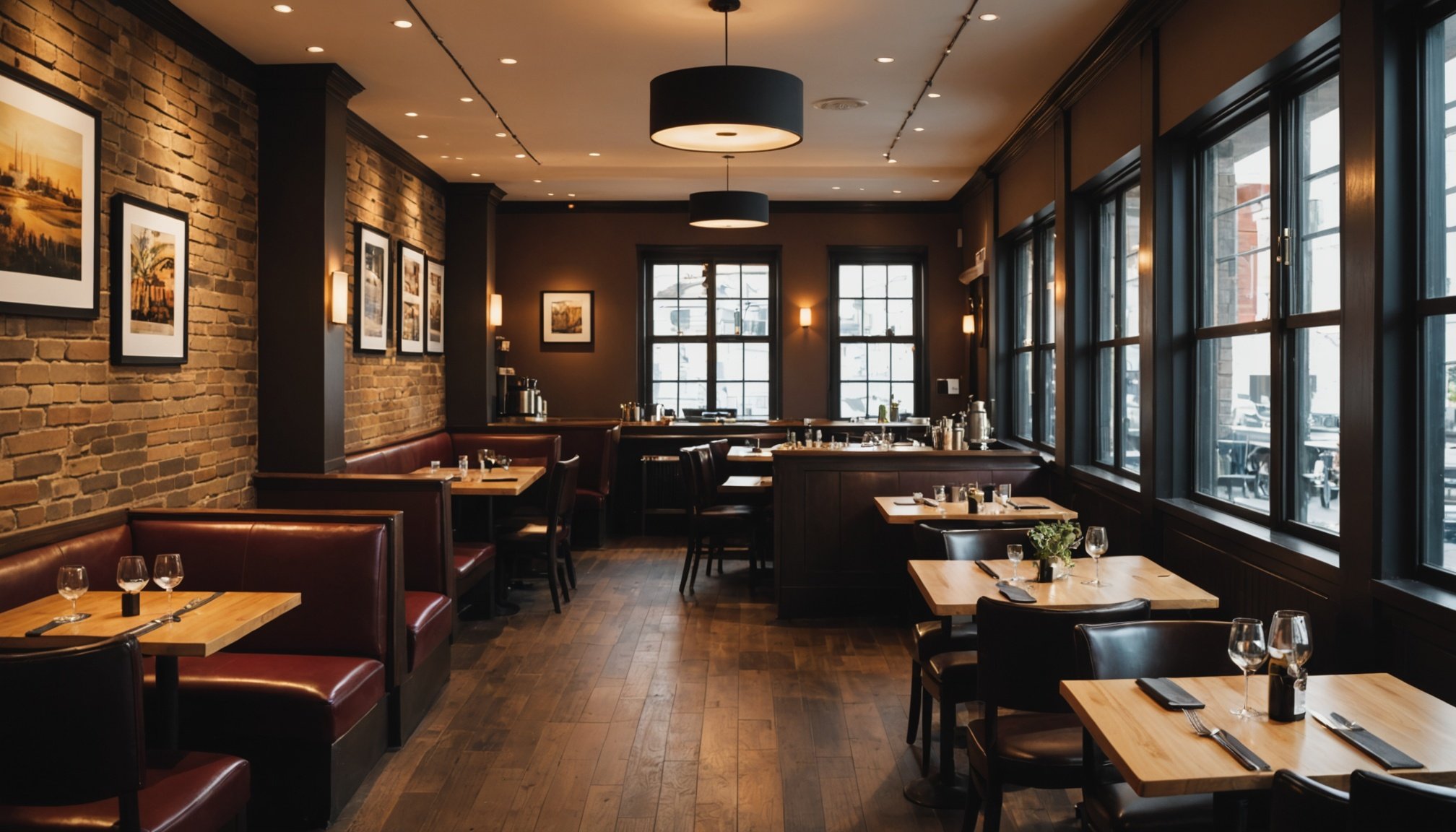No-shows can significantly impact the profitability of reservation-only restaurants. They not only disrupt service but can also frustrate staff and loyal patrons. Implementing effective strategies to reduce these occurrences is essential. From refining your booking process to enhancing customer engagement, various approaches can improve attendance rates. Discover innovative solutions tailored to your restaurant's needs that can help create a culture of accountability and ultimately boost your bottom line.
Understanding the Impact of No-Shows
The unseen effects of no-shows extend beyond empty tables.
Also to read : Essential Safety Guidelines for Deep Fryer Use in Professional Kitchens: Keep Your Staff and Food Safe!
The Financial Toll
No-shows significantly affect restaurant revenue, with some establishments reporting losses of up to 20% due to unoccupied tables. This issue is compounded by the fact that reservations often represent peak business hours. With a high rate of no-shows, restaurants face the challenge of balancing inventory and staffing, leading to potential waste and increased operational costs.
Psychological and Operational Strain
The impact of no-shows is not just financial. The psychological toll on staff can be profound, affecting morale and service quality. Employees may feel undervalued when their efforts to prepare for a full house go unfulfilled. Operationally, reservation management becomes more complex, requiring dynamic adjustments to accommodate fluctuating customer numbers.
Topic to read : Essential Temperature and Humidity Guidelines for Perfectly Aging Cheeses in Your Restaurant Kitchen
Successful Mitigation Strategies
Several restaurants have implemented strategies to mitigate the impact of no-shows. For instance, a popular bistro in New York adopted a deposit system, reducing no-shows by 30%. Another case involved a London eatery that introduced a waiting list, allowing them to fill seats quickly when cancellations occurred.
- No-show fees
- Overbooking strategies
- Improved reservation systems
These strategies highlight the importance of effective reservation management in minimizing the negative effects on both revenue and staff morale.
Effective Communication Strategies
Enhancing customer engagement through strategic interactions.
Importance of Pre-Visit Communication
Customer communication is crucial in reducing no-shows and ensuring a seamless dining experience. Pre-visit reminders are a strategic way to keep reservations top-of-mind. By sending confirmation calls or texts, restaurants can effectively remind patrons of their upcoming visits. This not only confirms attendance but also allows customers to communicate any changes in their plans.
Best Practices for Confirmation Calls and Texts
When implementing confirmation calls, it is vital to maintain a polite and professional tone. Calls should be concise, confirming reservation details while offering an easy option for customers to modify their booking. Text reminders serve as a quick and non-intrusive method, often preferred by busy patrons.
- Call Timing: 24-48 hours before the reservation
- Message Content: Include date, time, and contact information
- Response Options: Provide easy cancellation or rescheduling links
Utilizing Email Marketing
Email marketing is an effective engagement tactic to maintain customer interest. Regular newsletters featuring special offers or menu updates can remind customers of their reservations. Personalized emails can enhance customer loyalty and reduce no-shows by keeping the restaurant top-of-mind. Consistent and strategic customer communication can significantly impact reservation reliability and customer satisfaction.
Implementing a Waitlist System
Enhancing customer flow and optimizing reservations.
Benefits of a Waitlist System
A waitlist system is a powerful tool for managing customer flow and ensuring efficient reservation optimization. By having a structured waitlist, restaurants can fill seats promptly when cancellations occur, maximizing occupancy and minimizing revenue loss. This system also enhances the dining experience by reducing wait times and improving customer satisfaction.
Technology Solutions for Managing Waitlists
Modern technology offers several solutions for effective waitlist management. Digital platforms allow restaurants to track and manage waitlists in real-time, providing transparency and convenience for both staff and customers. These systems can send automated notifications to alert customers when their table is ready, streamlining the process and maintaining a steady customer flow.
- Real-Time Updates: Keep customers informed about their wait status
- Automated Notifications: Send alerts when tables are available
- Integration: Sync with existing reservation systems for seamless operation
Strategies for Converting Waitlist Customers
Turning waitlist patrons into confirmed reservations is key to reservation optimization. Offering incentives such as complimentary appetizers or drink discounts can encourage waitlist customers to return. Additionally, maintaining clear communication and providing accurate wait time estimates help build trust and loyalty, increasing the likelihood of future bookings.
Offering Incentives for Attendance
Incentives can transform potential no-shows into loyal patrons.
Types of Incentives
Implementing customer incentives is a strategic approach to encourage guests to honor their reservations. Common incentives include discounts on future visits or complimentary appetizers. These attendance rewards not only entice customers to show up but also enhance their dining experience, fostering a sense of value and appreciation.
Case Studies on Effectiveness
A study of a Chicago restaurant revealed that offering a 10% discount for on-time arrivals increased reservation attendance by 25%. Similarly, a San Francisco eatery found that providing a free dessert for guests who kept their reservations improved customer loyalty and reduced no-shows by 15%. These examples demonstrate the power of attendance rewards in promoting reliable customer behavior.
Implementing Loyalty Programs
Loyalty programs are another effective tool in encouraging show-ups. By rewarding repeat visits with points or exclusive offers, restaurants can build a dedicated customer base. For instance, a popular chain introduced a program where diners earn points for each reservation honored, redeemable for future meals. This not only incentivizes attendance but also strengthens the restaurant’s relationship with its patrons.
- Discounts: Future visit savings
- Freebies: Complimentary items
- Points System: Earn rewards for attendance
Incorporating these strategies can significantly enhance reservation reliability and customer satisfaction.
Utilizing Technology Solutions
Enhancing efficiency and reducing no-shows through innovation.
Overview of Popular Reservation Management Systems
In the modern dining landscape, reservation systems play a crucial role. They streamline operations and minimize no-shows. Popular systems like OpenTable, Resy, and Yelp Reservations offer features such as real-time table availability and customer data analytics. These tools empower restaurants to optimize seating and enhance customer experiences.
Features to Look for in Technology
When choosing a reservation system, prioritize features that directly address no-show challenges. Look for systems with integrated automated reminders, which can significantly reduce no-show rates by sending timely alerts to patrons. Additionally, systems with user-friendly interfaces and robust data tracking capabilities are essential for effective management.
- Automated Reminders: Reduce no-show rates by keeping customers informed
- Real-Time Updates: Ensure accurate table availability
- Customer Data Analytics: Enhance personalized service
The Role of Automated Reminders
Automated reminders are a game-changer in the fight against no-shows. By sending notifications via text or email, these reminders keep reservations top-of-mind for customers. A study indicated that implementing automated reminders can decrease no-show rates by up to 20%. This technology not only improves attendance but also fosters better customer relationships, ensuring a smoother dining experience.
Educating Staff on Customer Engagement
Empowering staff to enhance customer interactions and reduce no-shows.
Importance of Staff Training in Managing Reservations
Staff training is crucial in effectively managing reservations and minimizing no-shows. Well-trained staff are equipped to handle customer interactions with professionalism, ensuring a positive dining experience. Training programs should focus on developing skills that enable employees to engage customers effectively, fostering a welcoming atmosphere.
Techniques for Staff to Engage Customers and Reduce No-Shows
Implementing specific engagement techniques can significantly reduce no-show rates. Staff should be trained to communicate clearly and confidently about reservation policies, emphasizing their importance in maintaining service quality. Techniques such as personalized greetings and attentive service can enhance customer satisfaction, encouraging patrons to honor their reservations.
- Personalized Interactions: Tailor conversations to individual customers
- Clear Communication: Explain policies and expectations concisely
- Follow-Up Practices: Reinforce reservation details and confirm attendance
Role of Staff in Communicating Policies and Expectations
The role of staff in communicating policies and expectations is pivotal. They serve as the face of the establishment, ensuring customers understand the significance of their reservations. By clearly articulating policies, staff can prevent misunderstandings and foster a culture of accountability. This proactive approach not only reduces no-shows but also builds trust and loyalty with customers.
Analyzing Customer Behavior
Unlocking insights to enhance reservation strategies.
Gathering and Analyzing Data
Understanding customer insights is crucial for refining reservation strategies. By collecting data on reservation habits, restaurants can identify patterns in no-show behavior. This involves monitoring reservation times, frequency, and customer demographics. Advanced analytics tools can process this data, revealing trends that inform decision-making.
Identifying Patterns and Trends
Recognizing patterns in customer behavior allows restaurants to anticipate no-show risks. For instance, analysis might show that weekend evenings have higher no-show rates. By monitoring these trends, establishments can adjust staffing and inventory accordingly, minimizing potential losses. This proactive approach ensures a more efficient operation.
- Peak Times: Identify high-risk periods
- Customer Demographics: Analyze age, location, and preferences
- Repeat Offenders: Track customers with frequent no-show history
Utilizing Insights to Refine Strategies
Leveraging behavior analysis, restaurants can enhance their reservation strategies. Insights gained from data can lead to more targeted communication, such as personalized reminders or tailored incentives for high-risk groups. By continuously updating strategies based on trend monitoring, restaurants can reduce no-show rates and improve customer satisfaction.
"Data-driven decisions are key to optimizing customer experiences and reducing operational inefficiencies." – Industry Expert
Implementing these practices empowers restaurants to stay ahead in a competitive market, ensuring a reliable and enjoyable dining experience for all patrons.
Continuous Improvement and Feedback
Enhancing services through customer insights and adaptive strategies.
Importance of Collecting Feedback Post-Visit
Gathering customer feedback is essential for refining service improvement and operational strategies. Post-visit surveys provide valuable insights into the dining experience, highlighting areas of success and those needing attention. This feedback loop enables restaurants to continuously adapt and enhance their offerings, ensuring customer satisfaction and loyalty.
Strategies for Using Customer Feedback to Enhance Service
To effectively utilize customer feedback, restaurants should implement structured review processes. Analyzing feedback can reveal trends and common concerns, allowing for targeted service improvement. Establishments might adopt a feedback-driven approach, where specific customer suggestions lead to tangible changes in service delivery or menu adjustments.
- Analyze Trends: Identify common themes in feedback
- Implement Changes: Use insights to make improvements
- Monitor Results: Track the impact of adjustments
Regularly Reviewing and Adjusting No-Show Prevention Strategies
Regularly reviewing no-show prevention strategies ensures they remain effective and relevant. By integrating customer feedback into this process, restaurants can identify which strategies resonate with patrons and which require modification. This ongoing evaluation fosters a proactive approach to service delivery, reducing no-show rates and improving overall efficiency.
"Feedback is the breakfast of champions." – Ken Blanchard
Incorporating customer feedback into operational strategies not only enhances the dining experience but also builds a foundation of trust and engagement with patrons.



















